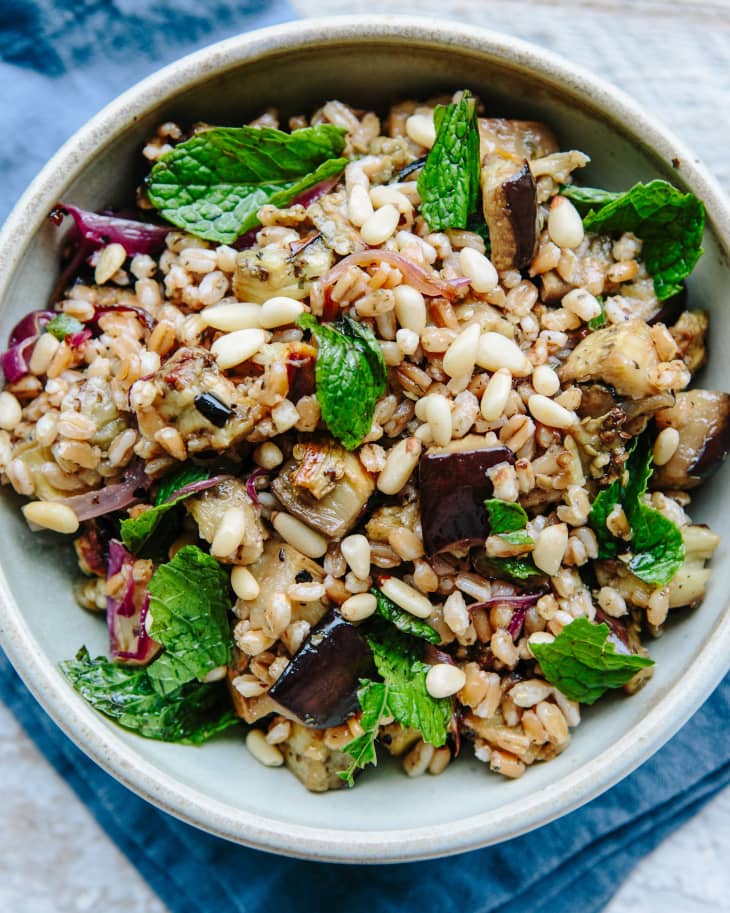5 Mistakes to Avoid When Cooking Eggplant
This time of year, when eggplant of all shapes and sizes is in abundance at the farmers market, it seems like the possibilities are endless. Throw it on the grill, roast it, braise it, stuff it, or stir-fry it — regardless of how it’s cooked, eggplant is bound to be delicious. That is, as long as you avoid these common eggplant cooking mistakes.
If anyone has ever said to you that they don’t like eggplant, it may be because one of these mistakes were made, which can prevent it from cooking up into the soft, tender vegetable it should be.
1. Not cooking it in enough fat.
The flesh of eggplant is like a sponge — it will immediately soak up any liquid it touches. Drizzle a spoonful of olive oil over cubes before roasting them and you’ll see that it’s already soaked through the flesh before the baking sheet even gets into the oven. You need to be a little more generous in order for there to be enough oil on the outside of the eggplant to cook properly.
Follow this tip: Don’t be afraid of fat when cooking or roasting eggplant, as it needs it. Instead of skimping on the amount of oil or butter the recipe calls for, follow it and be ready to transfer it to the heat right away.
2. Cooking it in too much fat.
That said, you don’t want to fall to the other side of the spectrum and drown your eggplant in fat. Since it is so sponge-like, the results could be extra greasy and unpleasant if you soak the vegetable in oil or butter. This is particularly the case when frying.
Follow this tip: Don’t freak out when your eggplant soaks up all the oil called for in a recipe and pour more in. Instead, trust that there’s enough to do the job. Recipes that call for frying eggplant usually employ techniques like salt or dipping in milk to mitigate excess oil absorption.
3. Always peeling it before cooking.
If it’s an extra-large eggplant, the vegetable could be older and the skin tougher, therefore, it’s a smart idea to peel it. But small, young eggplant have thin, tender skins that add great texture to the vegetable when cooked.
Follow this tip: Assess the situation per eggplant to decide whether you need to peel it or not. Small varieties usually have thin skins that can be left on and are enjoyable to eat. Make sure you’re picking the best eggplant possible from the very beginning to avoid this issue all together.
4. Overcrowding the pan.
The best eggplant is caramelized and crispy on the outside and melt-in-your-mouth tender on the inside. This is achieved by giving the cubes or slices enough room to brown while they cook. If you overcrowd them in the pan or baking sheet, they’ll steam instead of brown and you’ll never get that caramelization.
Follow this tip: Give your eggplant room to breathe. When cooking eggplant in the oven, or in whichever vessel you choose, spread it in a single layer so that it has space to brown and get nice and crisp on the exterior, while the inside cooks up to be soft and tender.
5. Drowning it with sauce or cheese.
It’s so tempting to dump all the tomato sauce and mozzarella over eggplant, but try to practice some restraint where you can. Why? Because eggplant actually tastes delicious, and if you completely drown it in sauce, cheese, or both, you’ll never taste the vegetable itself.
Follow this tip: Use added ingredients to enhance the flavor of eggplant — not mask it. Then you’ll be able to taste (and enjoy) every part of the dish.
